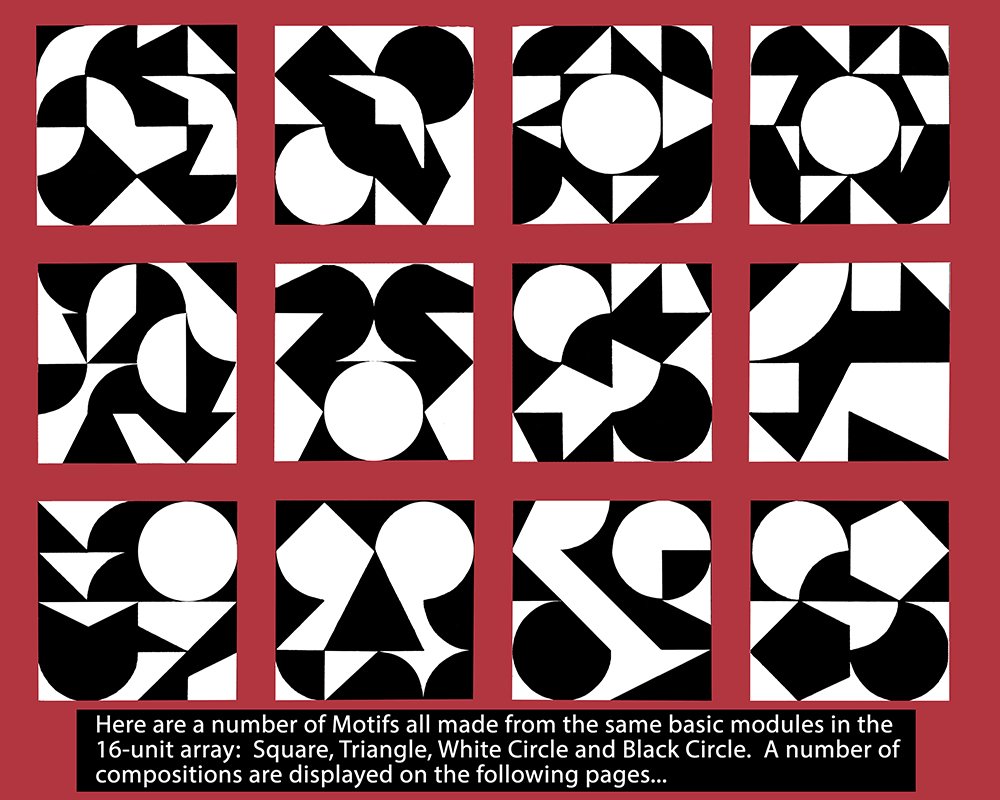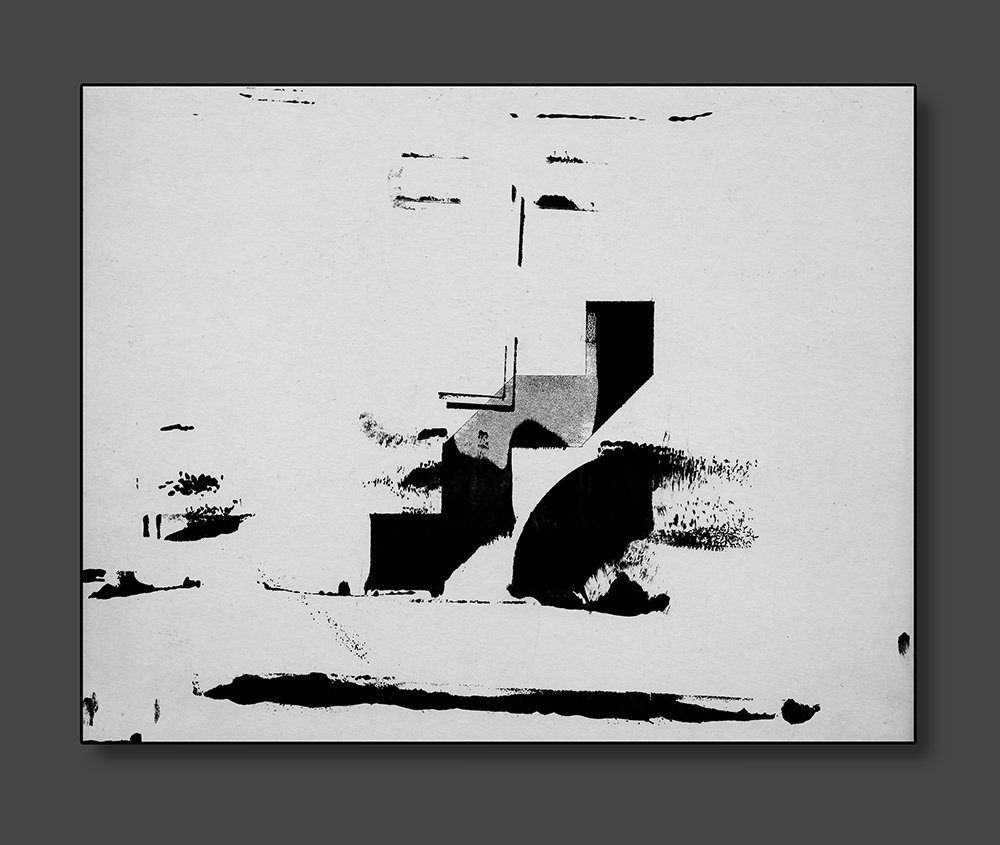My Modular Design System








































































































In 1970 I invented a Modular Design System that took me on a fantastic journey. I was 20 years old at the time and, as a major in Art History at the University of Washington, I had become enamored of many of the Bauhaus artists and tenets. The 1960s work of one devotee of that school, Victor Vasarely, I found especially appealing and exciting. His oeuvre of visually eye-catching and dramatic Op Art and Kinetic style(s) were also designed to be easily integrated into architectural settings. He made certain that his works adapted easily to manufacturing techniques and they were often “modular” , thus allowing them to be architectonically integral with modern buildings (rather than as art simply planted in situ) — a kind of “serial art” via manufacturing processes. This also appealed to me in an altruistic manner: The heady spirit of the 60s was in the air and, being young, I was interested in creating a utilitarian artform that would allow me to perhaps “change the world” for the better. I created my own Modular Design System based on the Circle, Square and Triangle. The gallery of images above describes in detail how everything works. It took me about a year of intense labor to produce a large portfolio of compositions and writings. The images in the gallery above exist as high contrast photographic prints (made from negatives). Each image was carefully drawn in ink on graph paper with each quadrant of a basic shape (e.g a quarter circle) set to a 1” x 1” square and then photographed with high contrast film and then printed in a darkroom (remember those?). For example, the images following the video in the gallery are, in real life, about 12”x 16”. I then proceeded to show my rather large portfolio to an endless number of museum directors, architects, interior and industrial designers, computer specialists, publishers in NY city, the artistic director for the World’s Fair in Spokane, recording studio execs as well as many artists, musicians and art festival organizers. I did that until 1975 at which time I decided to attend Pratt Institute in New York City to hone my artistic skills and work in the greatest art center in the world. By 1975 I had painted a number of large wall murals and had indeed realized my dream of integrating my Modular Design System into architectonic materials and environments. I also produced a number of graphic design projects (including the business card for jazz trumpet great, Freddie Hubbard) and signed a contract with two leaders in the Seattle architectural community: David Checkley (former president of John Graham Architects, the largest Seattle firm at the time) and Richard Roselle, perhaps the most successful design consultant in the city then (his major claim to fame was the design of the airline ticket which is still in use today). With them I was involved in many interesting projects that allowed me to learn first-hand the intricacies of 4-color printing, industrial silk-screen techniques, complex layout principles for the print houses and the application of my system in architectural projects using the latest materials and techniques. We even marketed an educational “toy” designed for both the Montessori schools and for sale in department stores. Unfortunately, I was not paid much for the required massive amount of labor that I performed — all outside of my day job. However, and most important perhaps, I met an amazing number of skilled professionals in a wide variety of design, architectural and artistic disciplines.